Stroom Invest interviews / curator Yasmijn Jarram
Yasmijn Jarram has been the new curator for GEM since August 2018. We talk about her profession, Helen Dowling (her first solo exhibition for GEM) and the obstacles that sometimes have to be overcome.
Friday afternoon and Gember, the restaurant in GEM, is crowded. There is hardly a table left for the interview. “The Erwin Olaf effect!” says Yasmijn Jarram. The exhibition about Erwin Olaf runs until June 16 in the Fotomuseum, but obviously we want to talk about Stranger in Display, the solo exhibition of Helen Dowling in GEM, the sister museum in the building next to the Gemeentemuseum. It’s the first show in GEM, Jarram has curated herself.
It looks like a great success. Do all these people also come for Helen Dowling?
That is hard to say. If you buy a ticket, it is for the Fotomuseum and GEM both. I do see that people who visit Erwin Olaf also visit GEM. I also notice people who are visiting us for Helen Dowling, later visit the Erwin Olaf exhibition.
Do you talk to visitors to learn from their experiences?
When I walk around in the hall, I sometimes overhear something and I can respond to it immediately. For example, there is a mattress in the exhibition space. Most people realize you can sit down on it. I was there a couple of hours ago when a woman with two little boys came in. They immediately ran to the mattress at which point the woman shouted, “No, no, no!”, and I said: “You’re allowed to sit there.”
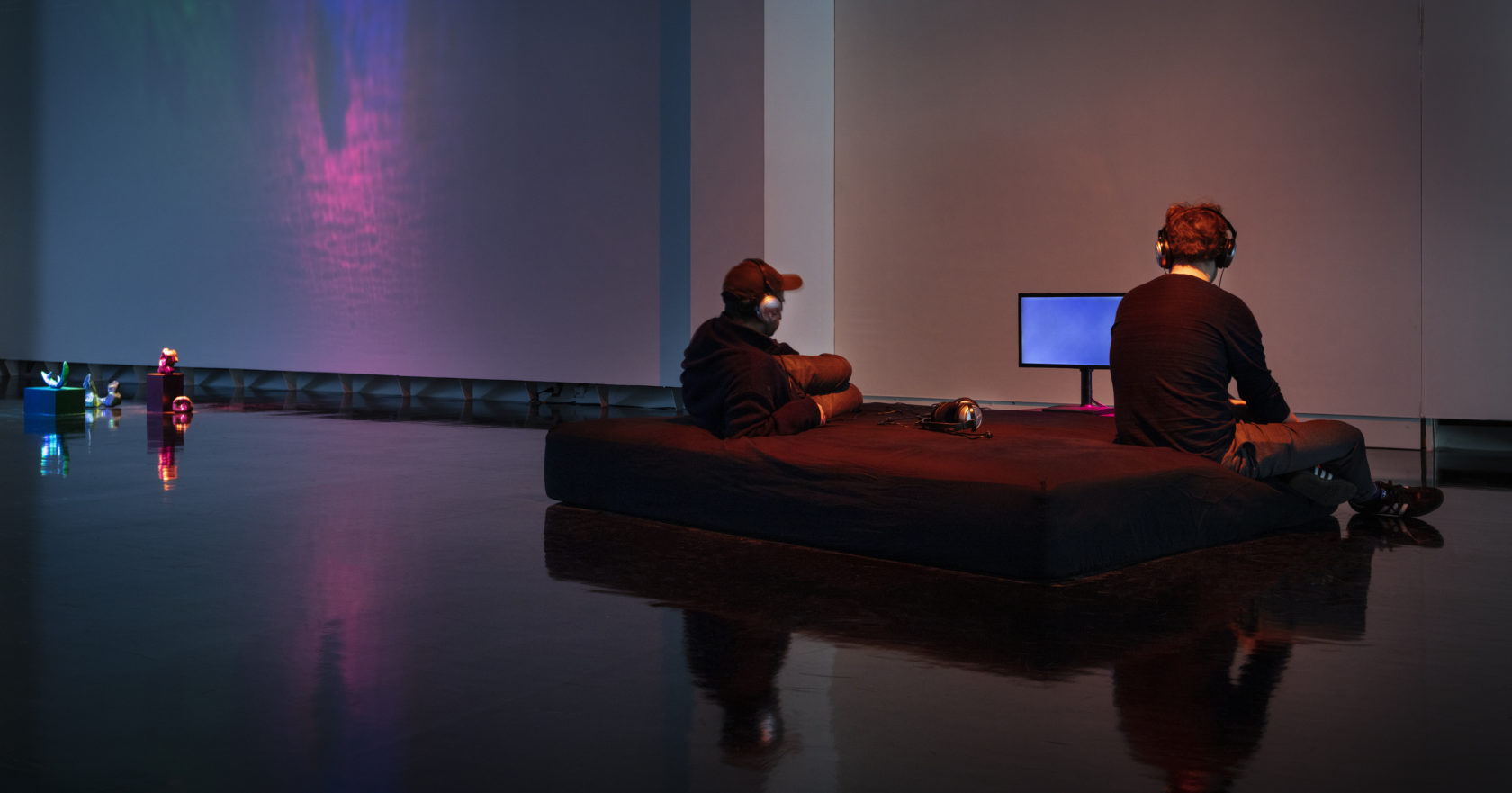
Art creates confusion!
What I also notice is that if people don’t know what the exhibition is about and they open the door, they are overwhelmed by the darkness and hesitate to come in. In fact, that’s the point: being overwhelmed by the floor and this entrance to another world. You need a bit of courage to enter.
What struck me most was the radical choice to make art stand out as best as possible in relation to the space.
It is also new for me to work with this kind of space. This is a nice way to get to know the space, to see what you can do with it. Fotomuseum and GEM changed places in 2016. I regularly hear people say that it is a shame that GEM has become smaller. I however, find it fascinating that you have to adjust this space to your own taste and that you can organize a world yourself.
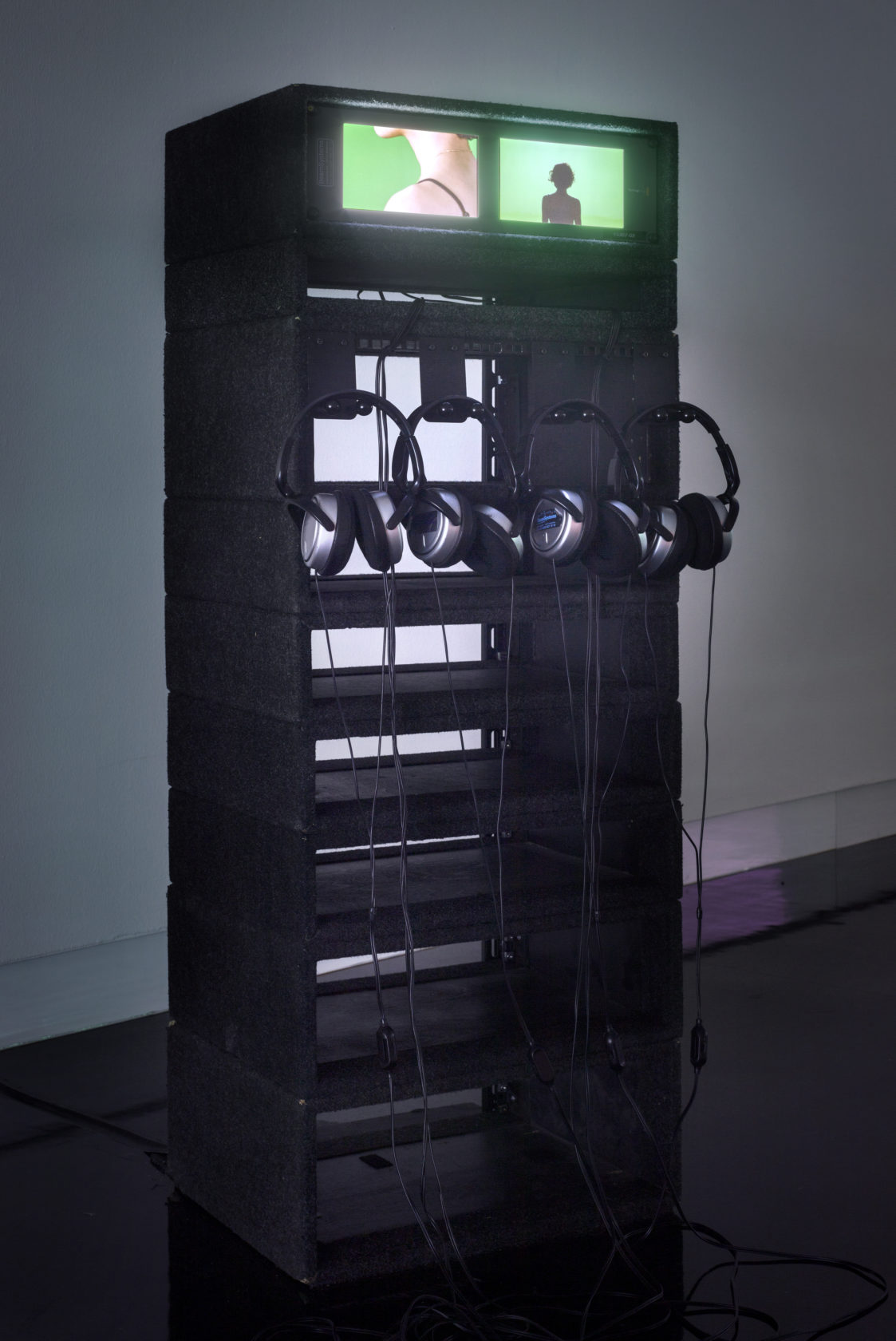
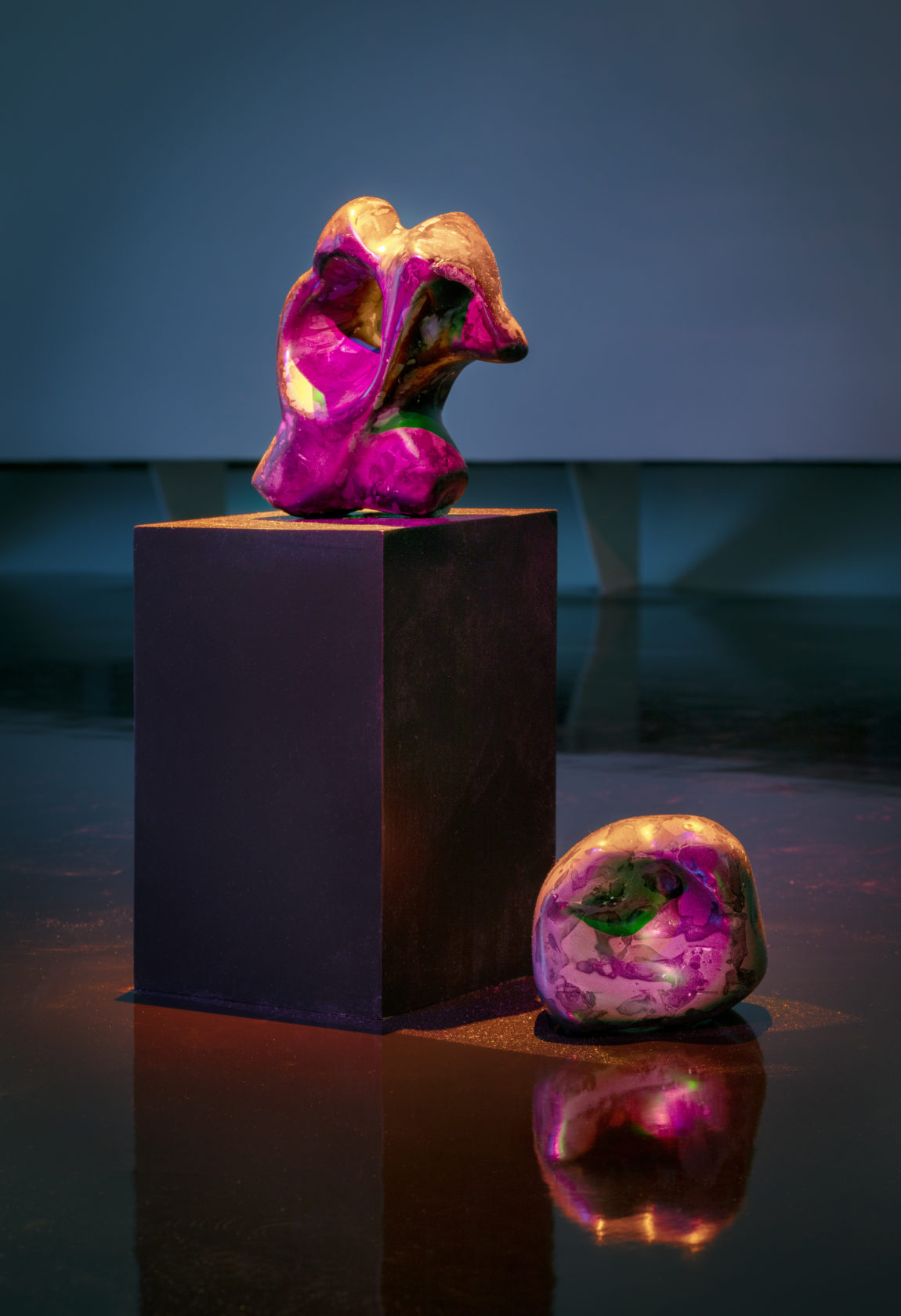
I can imagine that you keep thinking: if only I had the space my predecessors had.
I honestly don’t think so! Those were also different kinds of exhibitions, more museum-like exhibitions that wouldn’t have looked out of place at the Gemeentemuseum. The function of GEM is to be the more ‘edgy’ sister of the Gemeentemuseum. It is therefore important that GEM builds its own audience. It is now twelve years ago that former curator Roel Arkesteijn left, yet people in The Hague still talk about the GEM exhibitions of those early years. I do not have to be the face of GEM, because it is not about me, but it is important for an exhibition space to have a personality and a certain feeling attached to it.
You used that idea of the ‘edgy’ sister museum for the Helen Dowling exhibition?
For my first exhibition at the GEM I wanted to do something radical, something that had never been seen here before. Something that indicates a breath of fresh air and that shows that more experimental things can be expected. For example, video art has not been exhibited a lot yet.
How did Helen Dowling came into the picture?
I had previously worked with Helen for a group exhibition at Garage Rotterdam. I was looking for an artist with whom I could imagine this exhibition becoming a spherical whole. Helen crossed my mind quite soon. She had taken her work into a new direction that I found even more interesting. We started thinking together. I said: I want to treat the space as a large area. She also liked that idea. We agreed that we had to do something with the floor. Our first thought was a carpet. Somehow, we couldn’t decide which colour or material to pick. Earlier on, I had shown Helen a picture of Sophie Jung’s exhibition in the Basel art museum, who had created a silver mirror floor. I thought that looked exciting. Weeks later Helen suddenly said: What do you think about a black mirror floor? Then everything fell into place. The floor is an integral part of the exhibition. Because it plays such an important visual role, it also made it easier for us to make decisions about other matters. That is when you can start fitting the pieces of the puzzle together.
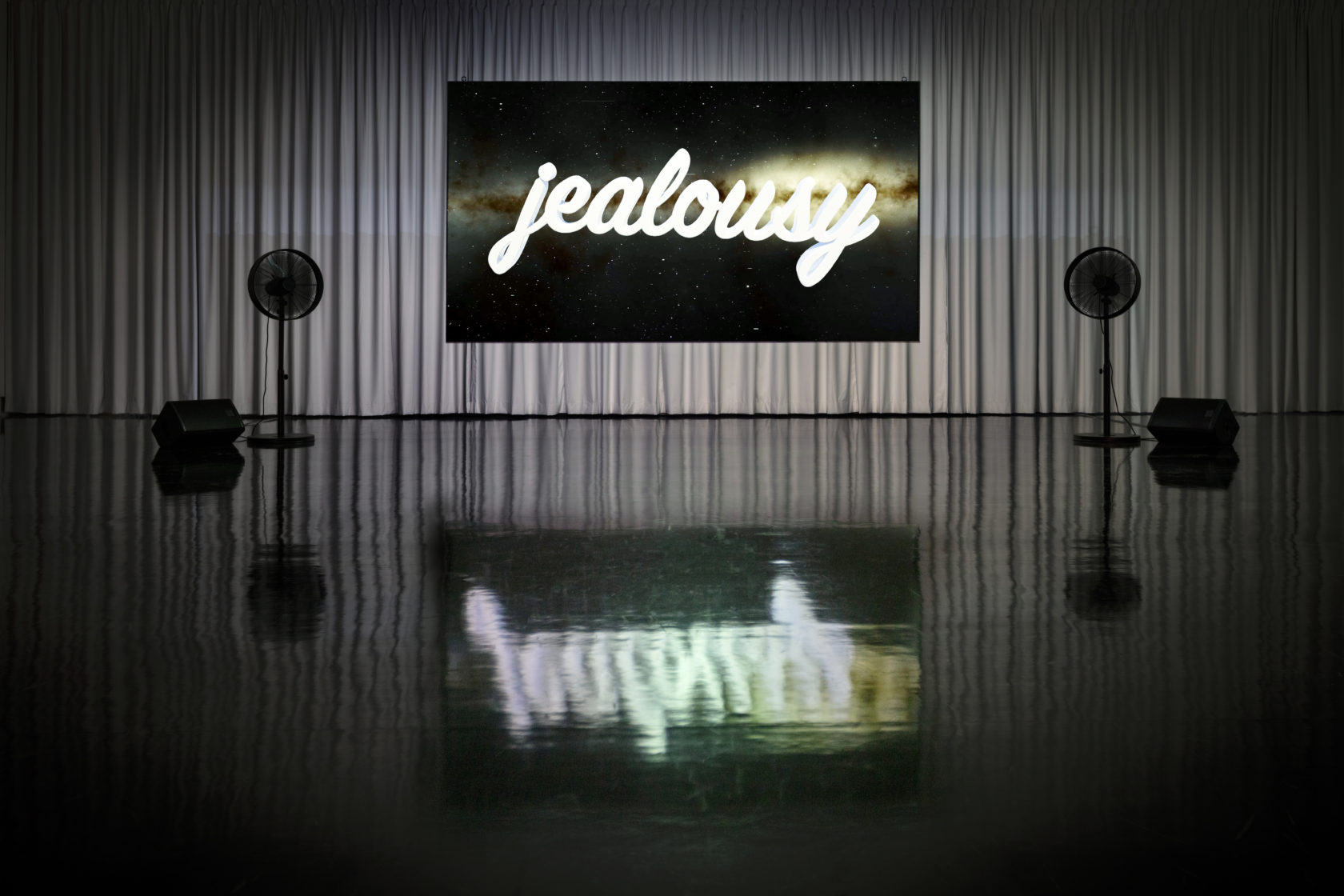
You used to do more group exhibitions. How do you experience collaborating with only one artist?
I have indeed created group exhibitions for Garage and Nest, among others. Before that, I also made solo exhibitions at 21rozendaal in Enschede. With group exhibitions you have a concept as a starting point. I select the artists on the basis of that concept. You often have that one piece in mind that would suit the exhibition. Another difference is that the curator has an important voice in a group exhibition. For example, I based the last exhibition at Garage on a song by Radiohead. That is personal and intuitive. Now, because it is a museum and you work from an institutional point of view, it is not so much about me, but more about the artist. I like that better.
Do you feel more pressure now that you work at a museum, instead of a smaller art gallery?
Strangely enough it’s the other way around for me. Now I look at coherence and have a long term perspective, from a lasting position. As a freelancer I worked for different organisations. It always felt like having to make one big gesture after another, and like you always had to come up with something new. Now it is much more in line with each other and you have time to let an idea mature and then think: that could be done in two years. All my ideas are now concentrated within one programme.
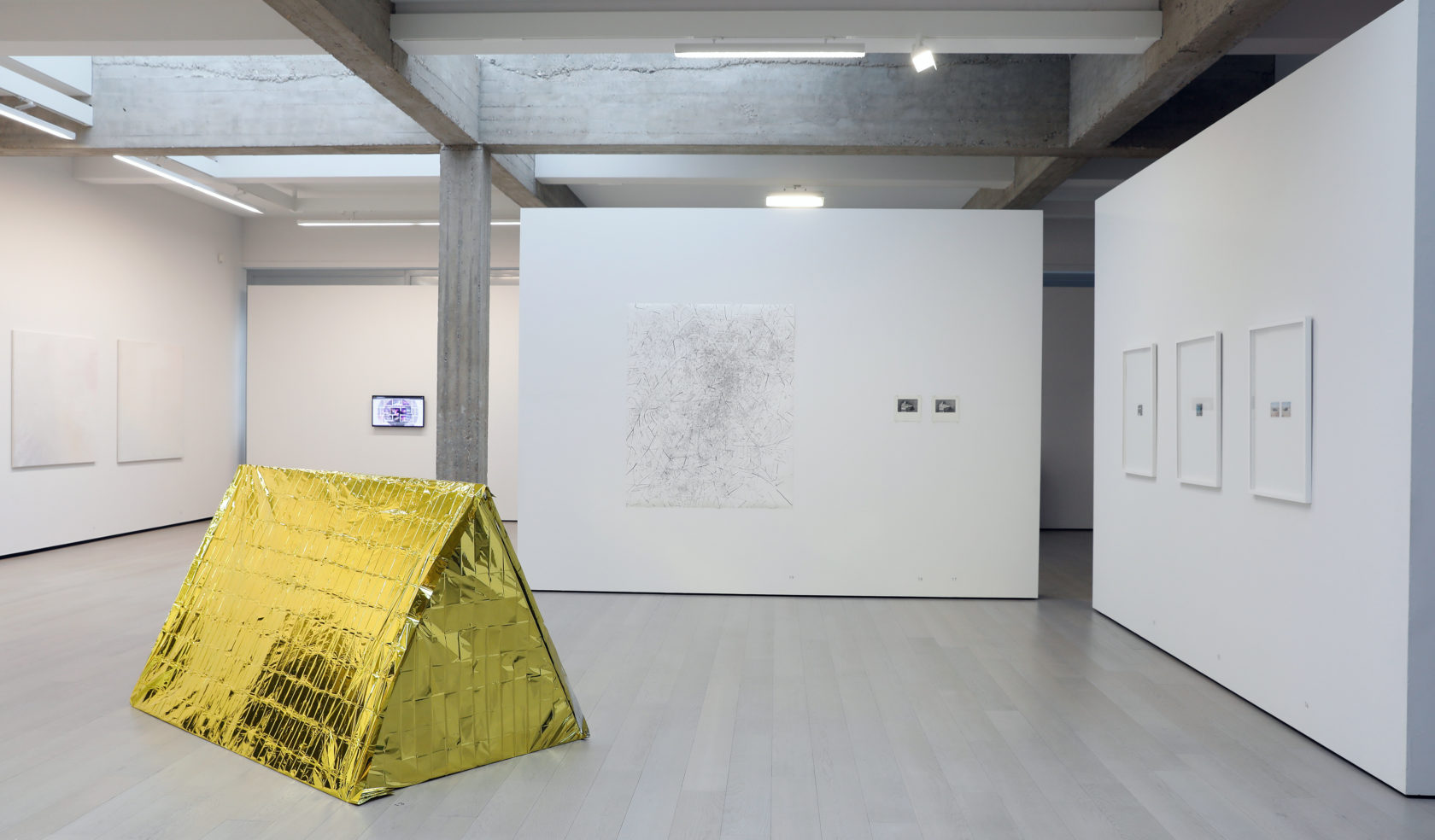
I imagine that you already have a wish list of artists and projects that you want to create in the long term.
It’s normal having your own tastes and preferences. It may start from my own curiosity and fascination, but at the same time it must be interesting for a lot of people. There must be enough variety in the programme too. I wouldn’t invite artists with a similar style three times in a row.
Can you give us a sneak peek of the following projects?
The next exhibition is ‘An unusual walk’, which is about Krijn Griezen, who died in 2011. He has done a lot in The Hague. Many people know the stairs in the sculpture garden of the Kroller-Müller Museum. At GEM, there’s been a desire for a while to do something with Krijn Griezen’s work. I have found many links to things that play a role in contemporary art: reusing things, a return to craftsmanship, a somewhat more conceptual approach. Krijn Griezen is the starting point of the exhibition. Four young artists, who have a similar mentality, will take part in this exhibition. It’s fascinating to show that the here and now is not unrelated to the past and that things come back. So again a group exhibition! (laughs) However, with a different approach. This time it is not about a shared theme, it’s about having a similar attitude towards their work. The four artists are Chaim van Luit, Bram de Jonghe, Paul Geelen and Sema Bekirovic.


Have you personally chosen them?
Yes, based on how they complement Krijn Griezen. While they have never exhibited together before, they already felt a kind of kinship among each other. There are many coincidences which you find out through conversations. It makes you think: look, it does fit. Exhibitions in part grow organically.
What makes you like an artist? Can you say something about that?
In general, I am attracted to artists who clearly relate to the time in which we live, but in a personal way. That personal bit is very important to me. It does not need to be autobiographical, but I like it when it has something whimsical, something unique about it, that gives you new perspectives. Actually, I mean the time we live in a little more nuanced: it could also be about the past. I do like artists who are part of the world.
So… socially critical?
There is often a social component to it, but it can have humour – or be crazy. I am not really attracted to research-based work, or heavily political work. And sometimes I think a particular piece is good, but I don’t really care much about it. I like it when you can get a sense of the artist’s personal style. Subcultures: very fascinating too. And I also like it when there is an interconnectedness with other disciplines, such as music and literature.
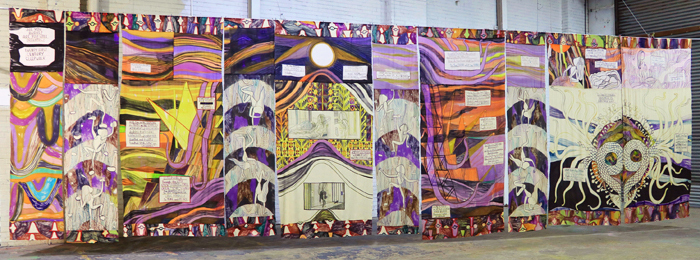
You were talking about young artists. What about artists who are 50+? Do you also have them on your mind as well?
Certainly. Coincidentally, after ‘An unusual walk’, the next exhibition is the first solo exhibition in a museum in the Netherlands by British artist Emma Talbot. She was born in 1969. I want to give younger artists their first platform, but also show established artists that we don’t yet know well here in the Netherlands.
Film festivals plan their festivals in such a way that they do not get in each other’s way. How does that work with museums and their artists?
GEM is called “museum for contemporary art”. Strictly speaking, this is the only exclusive contemporary art museum in the country. Other museums that pay attention to contemporary art do so under a broader flag. What is so special, is that GEM does function within a museum structure, but at the same time behaves as a kind of project space. It kind of occupies an intermediate area that has no equal in the Netherlands.
Helen Dowling can no longer be shown in the Kunsthal.
That will indeed not happen quickly, and vice versa of course. If someone now has a solo exhibition in the Stedelijk Museum, it is less interesting to do it again at GEM.

Do you also have enough time to view artists in places like Maastricht and Groningen?
I have to make time for it, but I like to do that in fact. Sometimes you find an artist who is potentially interesting and you can take a good look at their work. It is a combination of three things that I think of. Firstly, my own curiosity, because I think it works when an exhibition has been put together with energy and pleasure. Secondly, that it adds something to what is already on display in the Netherlands. And thirdly, would it be suitable for the GEM space?
How do you view Dutch art as a curator?
I view Dutch art from an international point of view. They must be able to participate on an international stage. I think that the tradition of artists’ initiatives is a very Dutch thing. You can see that in The Hague with new spaces, such as Trixie, that originate from the Royal Academy. You will find that abroad as well, but I think we in the Netherlands are very good at it, those kind of wayward, anarchist places. It is a typical Dutch down-to-earth approach: come on, we’ll just do it ourselves.
And do you as a curator have contact with new artists, the students from art colleges?
Certainly, I think that is very important. The opening of the Helen Dowling exhibition was pretty busy, many students from the academy were there as well. I have a lot of contact with the academy because I think it’s a shame that the students who are currently studying there don’t always know GEM anymore. They go, rightly so, to openings at Nest and 1646, but of course they should also come here. I noticed too that the other art institutions are happy to see something is happening with GEM again.
Have there already been students who have subtly asked to be exhibited?
They are very curious! It takes a while for them to ask that question, but once they do, a lot of questions follow: how does it work, how do you choose someone. There was also a project week at the academy recently. People from the field were invited. I was there with delegates from Art Rotterdam, Dürst Britt & Mayhew, Billytown, Stroom. It was meant for second year students. A kind of reality check of what they know and how non-transparent it all seems, while it doesn’t have to be that way. I like to take the mystery out of it.
Finally: you are the daughter of an artist. Is that an advantage in your work as a curator?
I can imagine – although I don’t know if it would have been otherwise – that I have a realistic view of what being an artist entails. My partner is an artist as well, so I experience that on a daily basis too. There are curators who have completed specific training, who have known from the start: I want to become a curator. I’ve never had that. Writing was a constant for me. Becoming a curator developed organically.
—————————————–
In a collaboration between Jegens & Tevens and Stroom Den Haag a series of interviews will be published with (inter)national curators, artists and critics participating in Stroom’s Invest Week 2019.
The Invest Week is an annual 4-day program for artists who were granted the PRO Invest subsidy. This subsidy supports young artists based in The Hague in the development of their artistic practice and is aimed to keep artists and graduates of the art academy in the city of The Hague. In order to give the artists an extra incentive, Stroom organizes this week that consists of a public evening of talks, a program of studio visits, presentations and a number of informal meetings. The intent is to broaden the visibility of artists from The Hague through future exhibitions, presentations and exchange programs. The Invest Week 2019 will take place from 17 to 21 June.